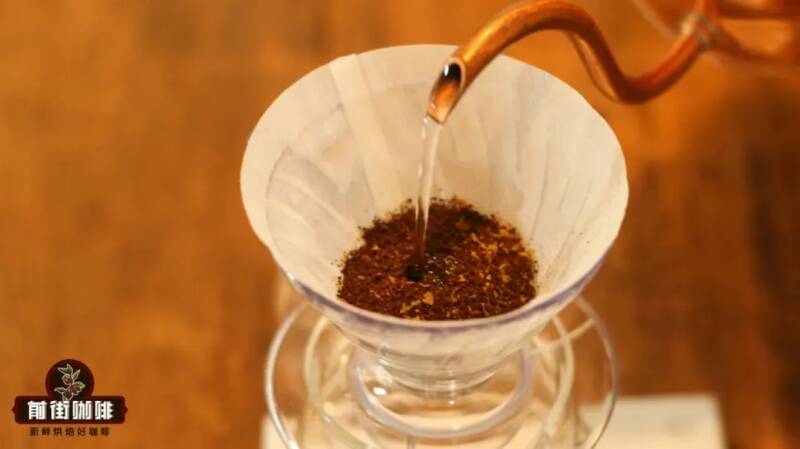What stages has the coffee wave gone through? Is instant coffee harmful to the body?
"tide" refers to the surging waves, but it can also be used as a metaphor for the ups and downs of a situation. The "coffee tide" refers to the development of coffee with ups and downs over the years. Since the discovery of coffee in 1400, coffee has experienced three waves. I believe many friends have heard of it.

But there are also some newcomers who only know its name, so Qianjie is here today to share the meaning of the magnificent three waves in the history of coffee development.
The first wave of coffee: coffee popularity the older generation of people think that instant coffee is good coffee, this is not without reason. Because before boutique cafes were as common as they are today, instant coffee was the absolute dominant coffee market in most countries.

The cause is that with the outbreak of the war, coffee has become a rigid strategic material for the armed forces participating in the war. in order to get the refreshing effect of coffee, some people who do not drink coffee have begun to try coffee and become addicted to it. In the early days, people just grinded the coffee beans and boiled them with water. Although it was very simple, it took not a little bit of time to grind and cook. In order to prevent soldiers from spending too much time on coffee production, some countries have begun the research and development of instant coffee. In 1938, Nestl é developed dry instant coffee to solve the problem of overcapacity of coffee beans in Brazil, and the demand for coffee expanded rapidly at the beginning of the second World War. As a result, the "first wave" of coffee took shape when both the production capacity and the consumer market were available at the same time. Coffee takes advantage of the instant form to seize the market and gradually becomes the daily consumer goods of the public.
Because instant coffee is very convenient to make, and people did not have any requirements for the taste of coffee at that time, for people in some countries (mainly the United States, Switzerland and Britain), instant coffee would be a better choice than freshly ground coffee. However, in order to save costs, manufacturers at that time chose Robusta as an instant raw material, plus a lot of sugar and cream were added to dilute bitterness. As a result, instant coffee once made coffee a byword for harm to health.
The second wave of coffee: coffee quality until 1966, a Dutch named Bates was so influenced by the "decent" coffee culture that he could not stand the poor quality of coffee in the United States. So he launched one of the greatest reforms in the coffee industry at that time in the United States: he proposed that coffee raw materials only use high-quality Arabica seeds, and adopt the concept of fresh roasting and fresh bubbles. This concept subverted the American coffee culture at that time, so it quickly caused a sensation throughout the United States, re-inspired and rewrote the American coffee culture. And this Mr. Bates is the founder of Piye Coffee. Inspired by Bitz, many people began to pursue higher quality of coffee. So we can know that the purpose of the "second wave" of coffee is to improve the quality of coffee.
It wasn't long before Bitz's apprentice opened a coffee shop and introduced the Italian coffee system. It wasn't long before this coffee shop became a leader in the coffee industry. Yes, it is Starbucks! The successful rise of Starbucks has spread the coffee system in Italy. Italian coffee, such as latte and cappuccino, was originally a local non-mainstream minority culture in Europe. After being spread by Starbucks, it has been transformed into the global mainstream popular culture to this day. People call this feat one of the most successful and powerful scenes in the modern history of diet.
The third wave of coffee: coffee boutique in 1974, Ms. Erna Knutsen put forward the concept of "boutique coffee" in Tea & Coffee Trade Journal (monthly Journal of Tea and Coffee). The original text says: "Special geographic microclimates produce beans with unique flavor profiles." Coffee beans with local flavor have been cultivated under the unique micro-climate and geographical conditions of the producing area. (the explanation of boutique coffee can be moved to this article "Fine Coffee")
The release of this concept makes people realize that the upstream of coffee has a significant impact on the taste of coffee, so the traceability of coffee is greatly increased and the information is more transparent. And it is precisely because of this transparency that people refine the process of coffee from seeds to cups. Specifically, it promotes the planting and processing level of the producing area, the win-win fair trade system, and improves the baking quality of roasters and the cooking capacity of coffee shops. Therefore, the main content of the third wave of coffee is to better pursue the flavor of coffee and narrow the distance between consumers and coffee producing areas.
The above are the three main waves in the development of coffee. With the advance of the times, we began to enter the fourth wave of coffee. So the question arises: what does the fourth wave of coffee refer to?
-END-
Important Notice :
前街咖啡 FrontStreet Coffee has moved to new addredd:
FrontStreet Coffee Address: 315,Donghua East Road,GuangZhou
Tel:020 38364473
- Prev

How many times can I repeat making hand-brewed coffee? How many times can I make hanging coffee? Can coffee be brewed as many times as tea leaves?
It can be said that no matter what method is used to extract coffee, the use of coffee powder is disposable. When we make a cup of coffee, we will directly discard the remaining coffee grounds in the filter. Therefore, Qianjie believes that many times, friends will inevitably have the idea: Why can't coffee be brewed multiple times
- Next

What are the characteristics of Panama rose summer? What's so special about Nugo Manor?
Although Central American coffee production is not high, accounting for only 11% of global coffee production, its popularity is very high because many producing countries mainly produce high-quality coffee. Panama, for example, is famous for producing rose varieties with exquisite floral, jasmine and peach aromas. At first, when the rose summer variety came to Panama,
Related
- What is the difference between a cake filter cup and a V60 conical filter cup? What are the advantages and disadvantages of the flat-bottomed filter cup brewing solution?
- What is the difference between fine coffee powder and medium coarse coffee powder? Do I need to sift out the fine coffee powder for making coffee by hand?
- Why does hot American coffee taste bitter? Difference in proportional concentration between hot American and ice American
- Is espresso stored overnight in the refrigerator harmful to your body? Is frozen coffee better than freshly ground coffee?
- What parameters and proportions of water temperature should be used to grind and brew fresh coffee beans? Why can't I drink freshly roasted coffee right away?
- Customers have "changed" Manner's new products! Shop assistant: Please don't mess around!
- Remove sockets in customer areas at Starbucks stores?! Netizen: I won't go if I really tear it down
- What is the difference between the taste steps of sun-dried coffee and washed coffee? Why is sun-cured coffee sweeter and washed coffee sour?
- The recipe for salty grapefruit dirty is revealed! Coffee Festival salty grapefruit dirty coffee making materials parameters ratio milk share!
- How about the flavor of Sunlight 74158 at Sidamo Banshaha Mathieu Processing Factory in Ethiopia? 74158 Share the proportion of coffee brewing parameters!

